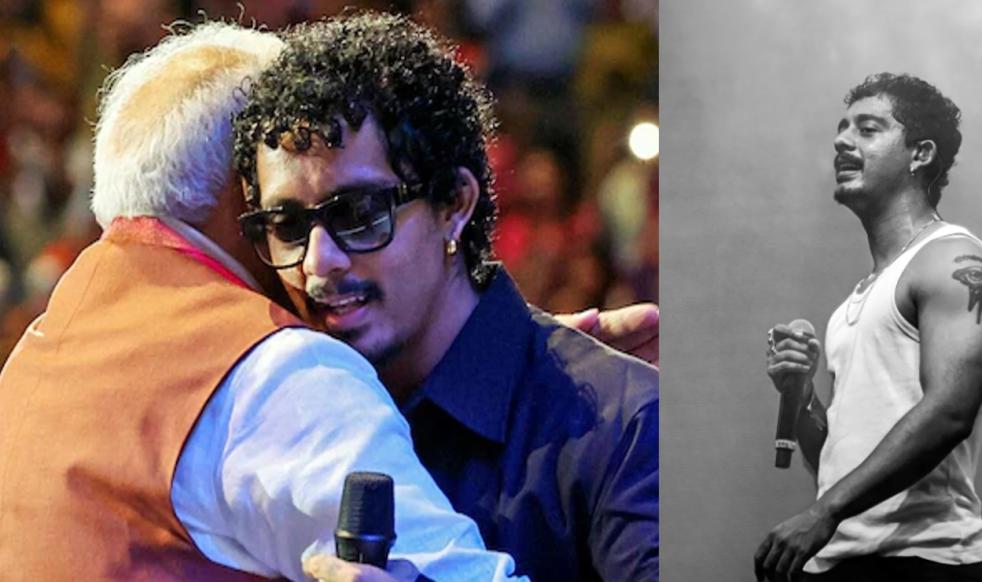In the shifting tides of the global music industry, few stories resonate as deeply as that of Suraj Cherukat, the Indian rapper known to the world as Hanumankind. His rise is not only a testament to the evolving landscape of hip-hop but also to the complex identities of the Indian diaspora, now stepping boldly into the international spotlight. With his track "Big Dawgs" making seismic waves—outpacing even Kendrick Lamar's "Not Like Us" at one point—Cherukat has positioned himself as a formidable force in a genre long dominated by Western voices.

Born in 1992 in Malappuram, Kerala, and raised in the multicultural melting pot of Houston, Texas, Cherukat’s life has been a fascinating interplay of cultures, a duality that seeps into his music. The sounds of Houston’s legendary hip-hop scene—the syrup-slow beats of DJ Screw, the gritty tales of UGK, and the jagged energy of Three 6 Mafia—provided the foundation of his musical education. But beneath the Texan influence lies an undeniable connection to India, a connection that has grown deeper since he returned to his homeland in 2021.
While India’s hip-hop scene is still in its nascent stages, Hanumankind’s journey represents the potential of Indian artists to transcend local boundaries and break into the global consciousness. What makes Cherukat’s ascent so compelling is his ability to straddle these two worlds. His music, with its heavy-hitting beats and hard-hitting lyrics, channels the ethos of Houston while being deeply rooted in the stories of his native India.
But for Hanumankind, this wasn’t just a musical journey—it was a rediscovery of identity. After spending his childhood shuttling between continents, from France to Nigeria to Dubai, it was Houston where his early love for music took shape. "Houston has a culture all its own," he said in an interview. "It's where I first started paying attention to the art of storytelling in hip-hop." He absorbed everything the Southern hip-hop scene had to offer, from the slow, codeine-laced remixes to the relentless hustle that defines the culture. Yet, upon his return to India, his music took on a new dimension, reflecting the experiences of a man trying to reconcile his cosmopolitan identity with his Indian roots.
In many ways, Hanumankind’s music is an extension of his personal journey—a cross-cultural odyssey that grapples with the challenges of belonging and identity. His lyrics often touch on societal struggles in India, weaving together his experiences abroad with the realities he encounters back home. In "Big Dawgs," the iconic video that rocketed him to international fame, Cherukat performs inside a *maut ka kuan* (well of death), a daring carnival attraction where motorcyclists defy gravity in a giant wooden pit. Shot in his hometown of Malappuram, the video is both a tribute to his roots and a defiant rejection of the typical flash and glamor often associated with mainstream hip-hop.

His decision to focus on Indian stuntmen, rather than luxury cars or extravagant lifestyles, was deliberate. "These are the real risk-takers," Cherukat noted in an interview, explaining that the men who perform these stunts come from humble backgrounds and practice a dying art. In the face of this, his work becomes a celebration of the underdog—those who hustle and take risks outside the confines of convention. "That’s what being a Big Dawg really means."
Hanumankind’s success speaks to a larger movement within the Indian diaspora. Once perceived as confined to traditional professions, the children of Indian immigrants are now branching out into creative fields, blending their dual identities to create something wholly new. For Cherukat, this shift from a stable corporate job at Goldman Sachs to the unpredictable world of rap wasn’t just about following a passion—it was about shedding societal expectations. "I realized it wasn’t for me," he said, reflecting on his decision to leave finance and pursue music full-time. "Music was the only thing that made sense."
Yet his reception in India has not been without challenges. Rapping primarily in English, Cherukat faces the uphill battle of gaining mass appeal in a country where vernacular rap dominates. Some critics argue that his music, while impressive, feels disconnected from the Indian experience. But it is precisely this tension—the duality of being both insider and outsider—that defines Hanumankind’s artistry. As he himself put it, "I’m not an Indian rapper, I’m a rapper from India."
Cherukat’s blend of cultural influences—Houston’s gritty underground, India’s vibrant street life—makes him a quintessential example of the modern diasporic artist. He doesn’t fit neatly into one box, nor does he try to. His ability to hop between genres, languages, and narratives is his strength, making him a compelling figure in the global hip-hop scene. His rise is emblematic of a new wave of Indian talent, one that is increasingly finding space on the world stage.
Hanumankind's recent performance in New York at the Nassau Coliseum, in front of Prime Minister Narendra Modi, marked another significant moment in his journey. The prime minister’s enthusiastic praise—"Jai Hanuman"—underscored the pride that many feel in seeing an Indian artist break into international consciousness.
The performance, alongside global artists like Devi Sri Prasad and Aditya Gadhvi, showcased how Indian talent is no longer relegated to local stages; it’s being celebrated globally.
As the Indian diaspora continues to grow, so too will the number of artists like Cherukat, whose work bridges continents and cultures. In an era where identity is increasingly fluid, Hanumankind’s music offers a blueprint for what it means to be an artist without borders, one whose voice is distinctly Indian but speaks a universal language. His journey may have begun in Houston, but his message resonates with listeners across the globe.

 667 Views
667 Views 0 comments
0 comments
Comments